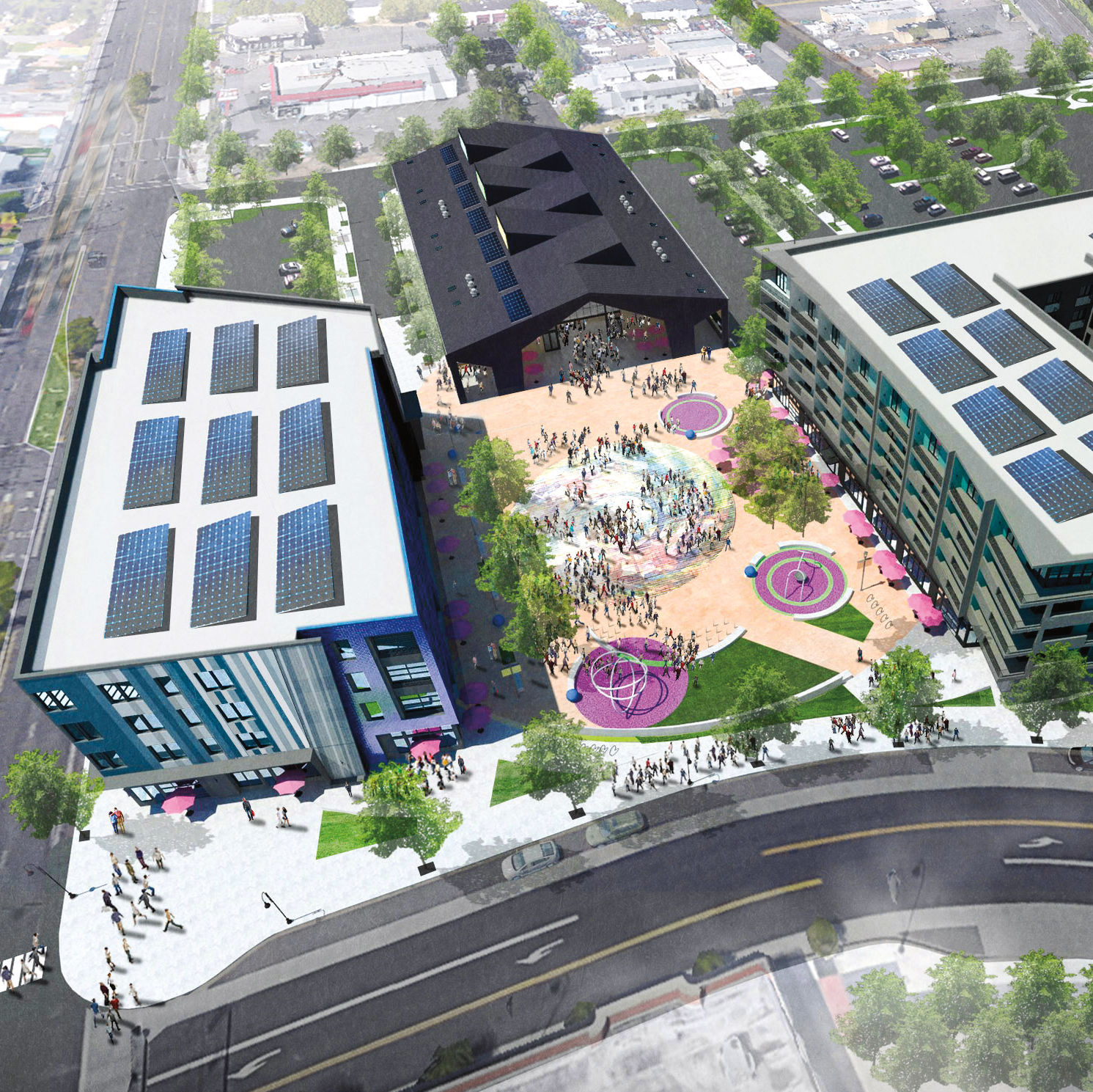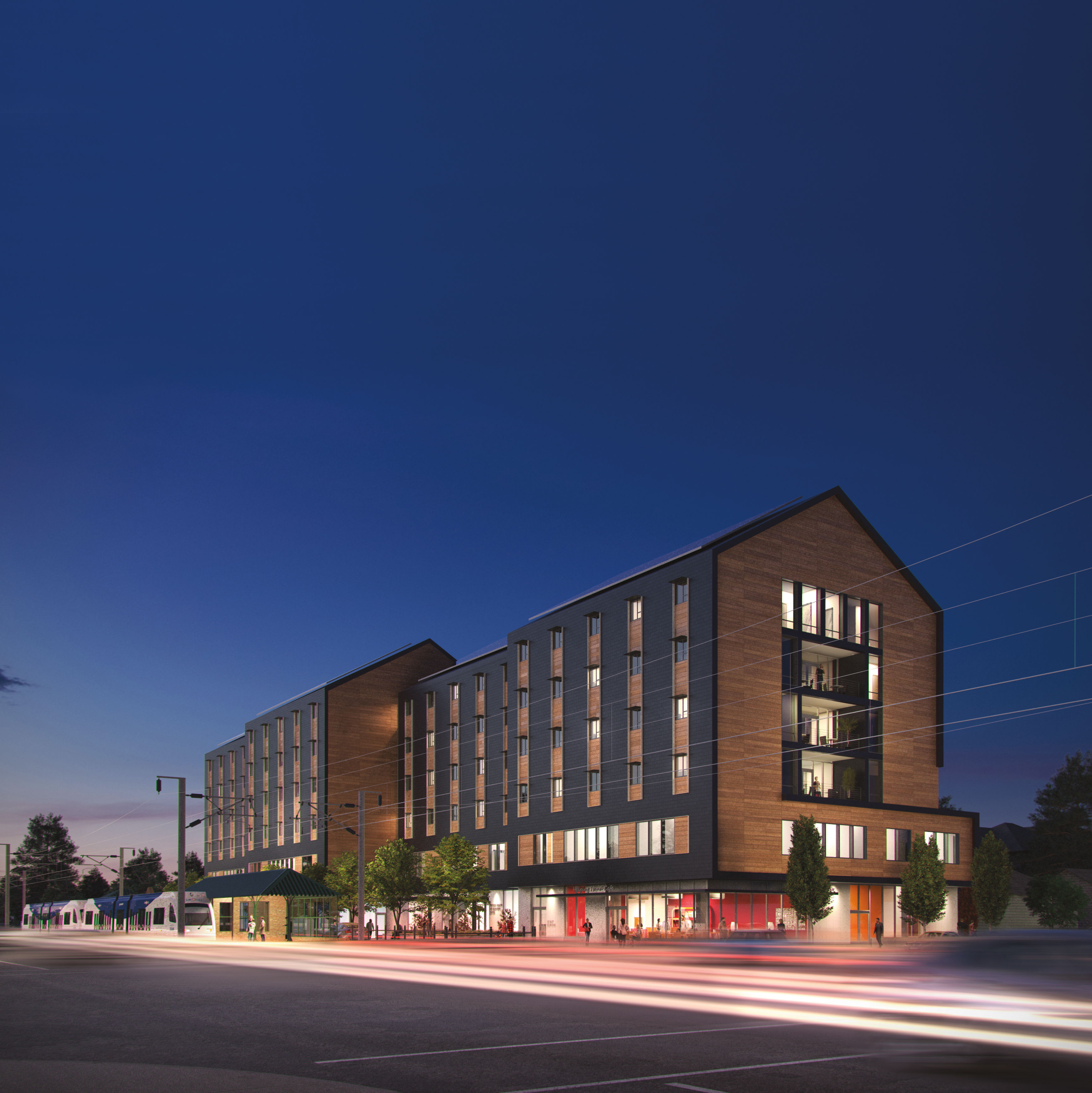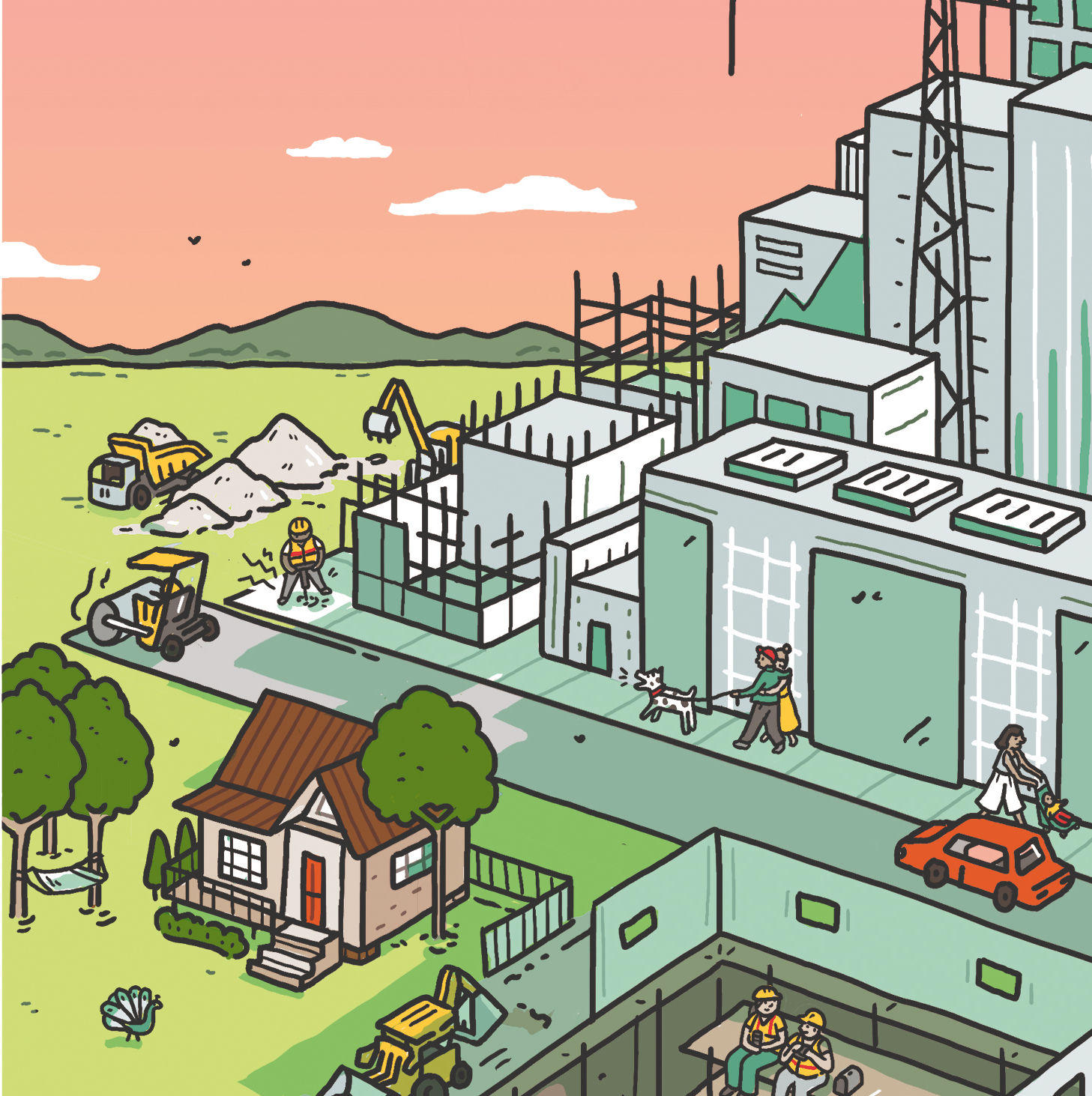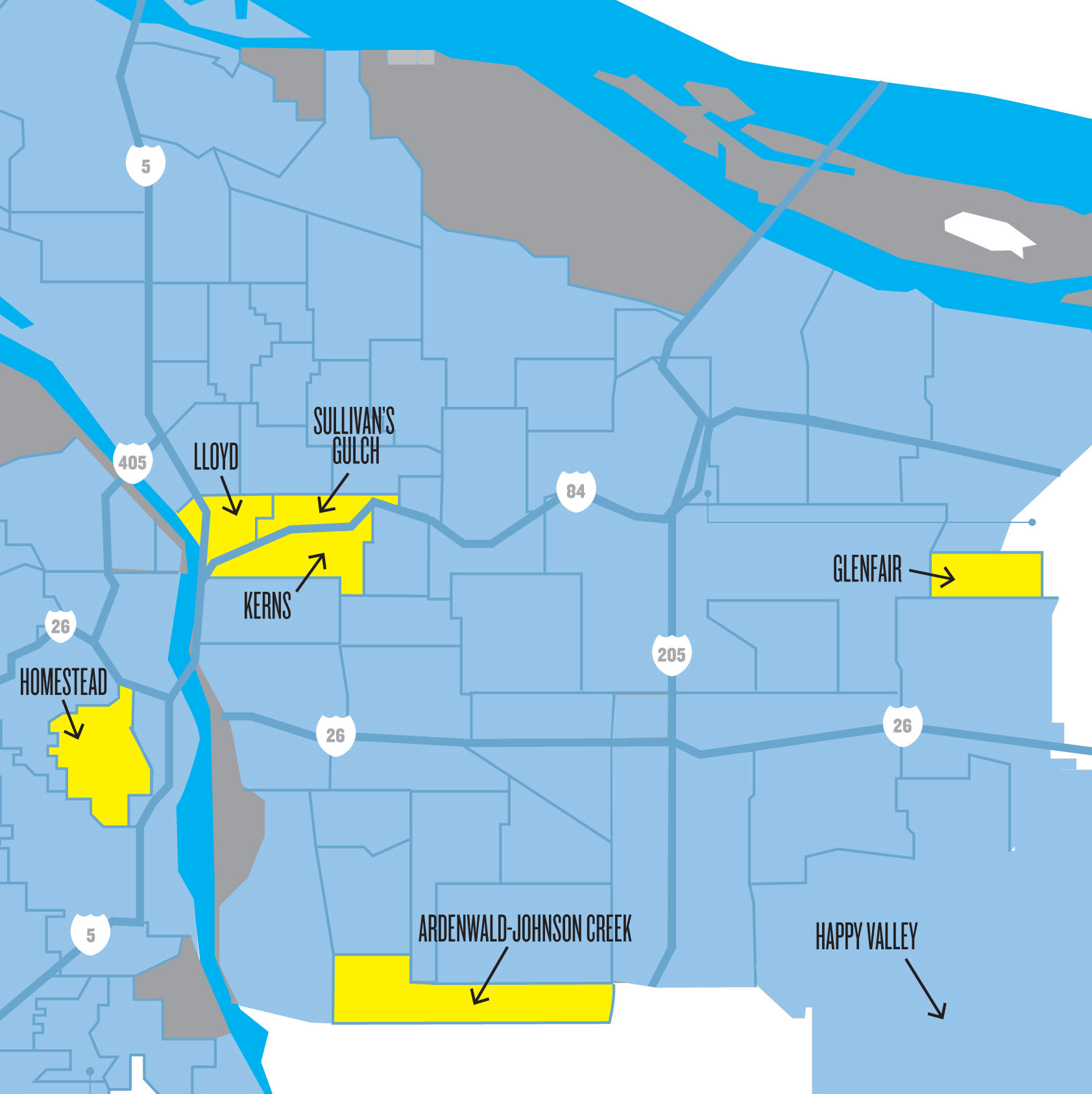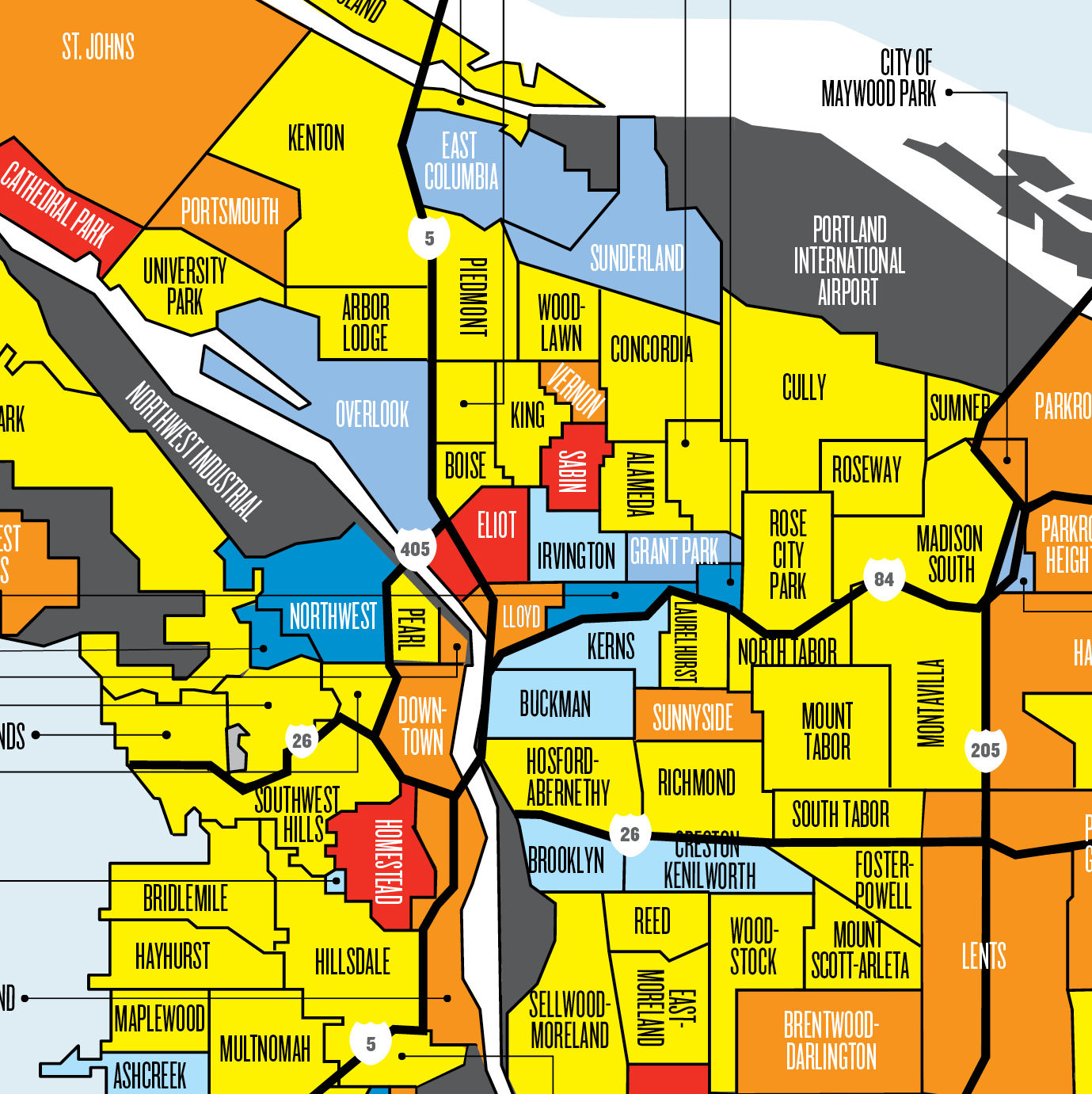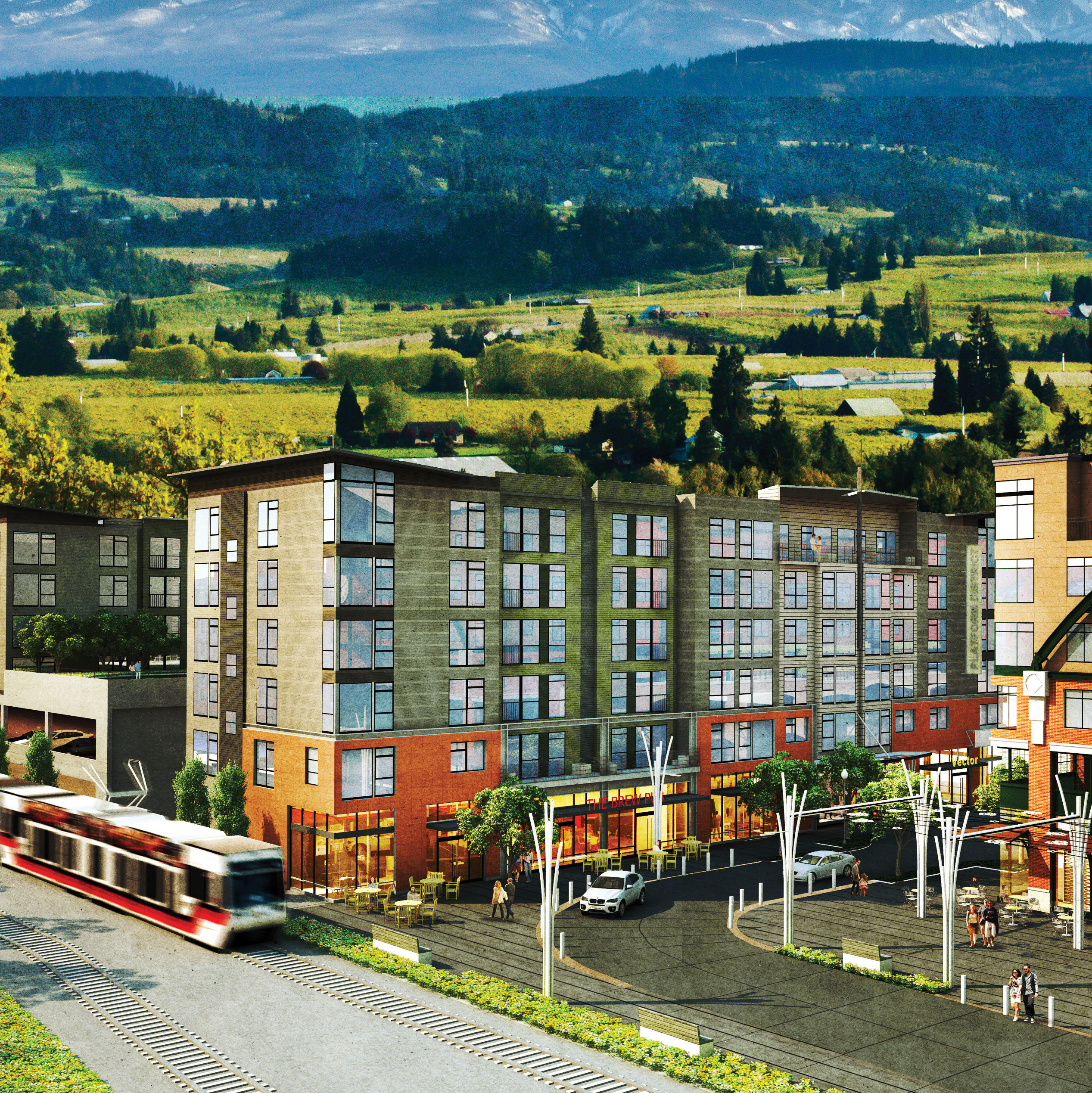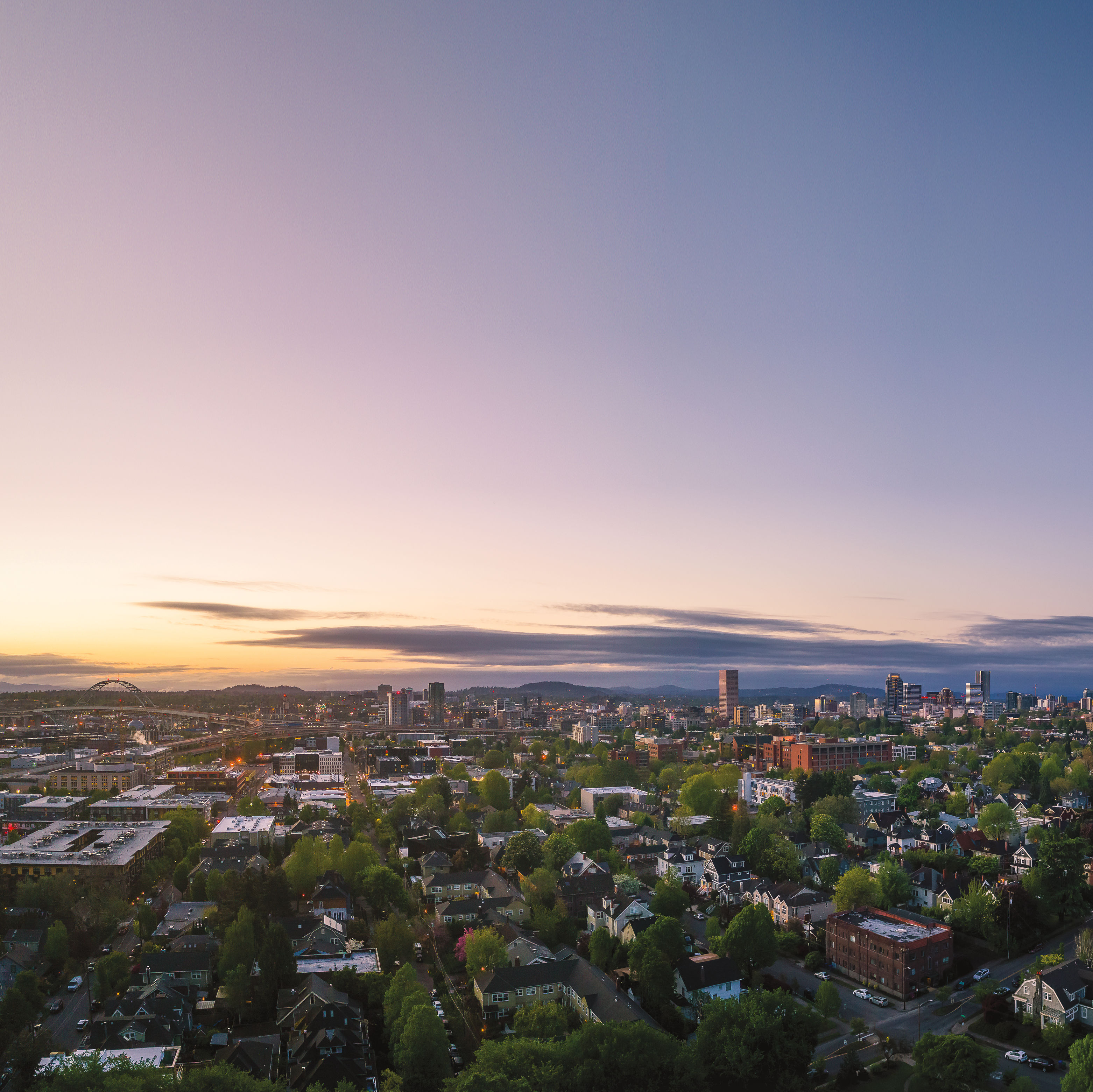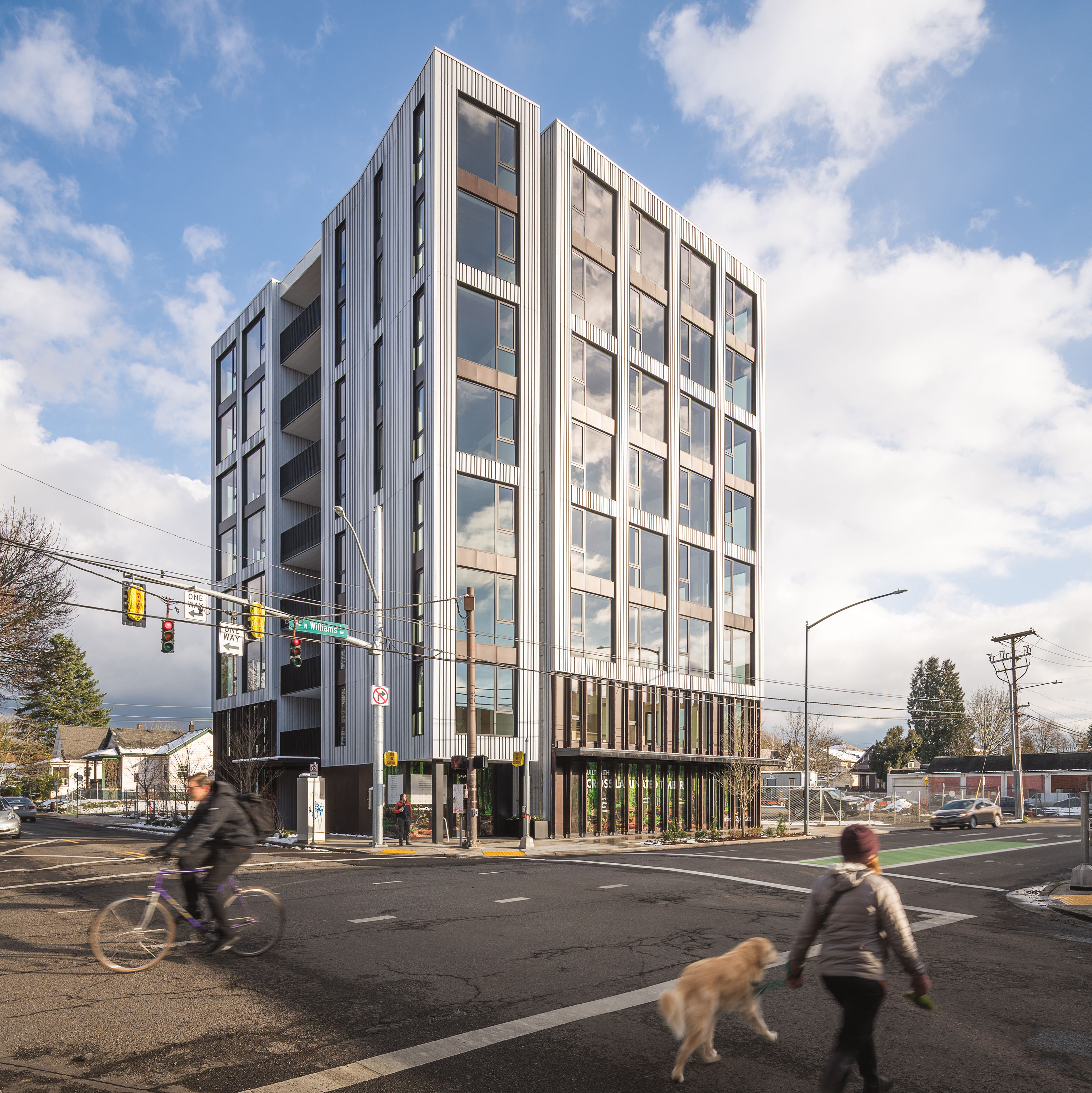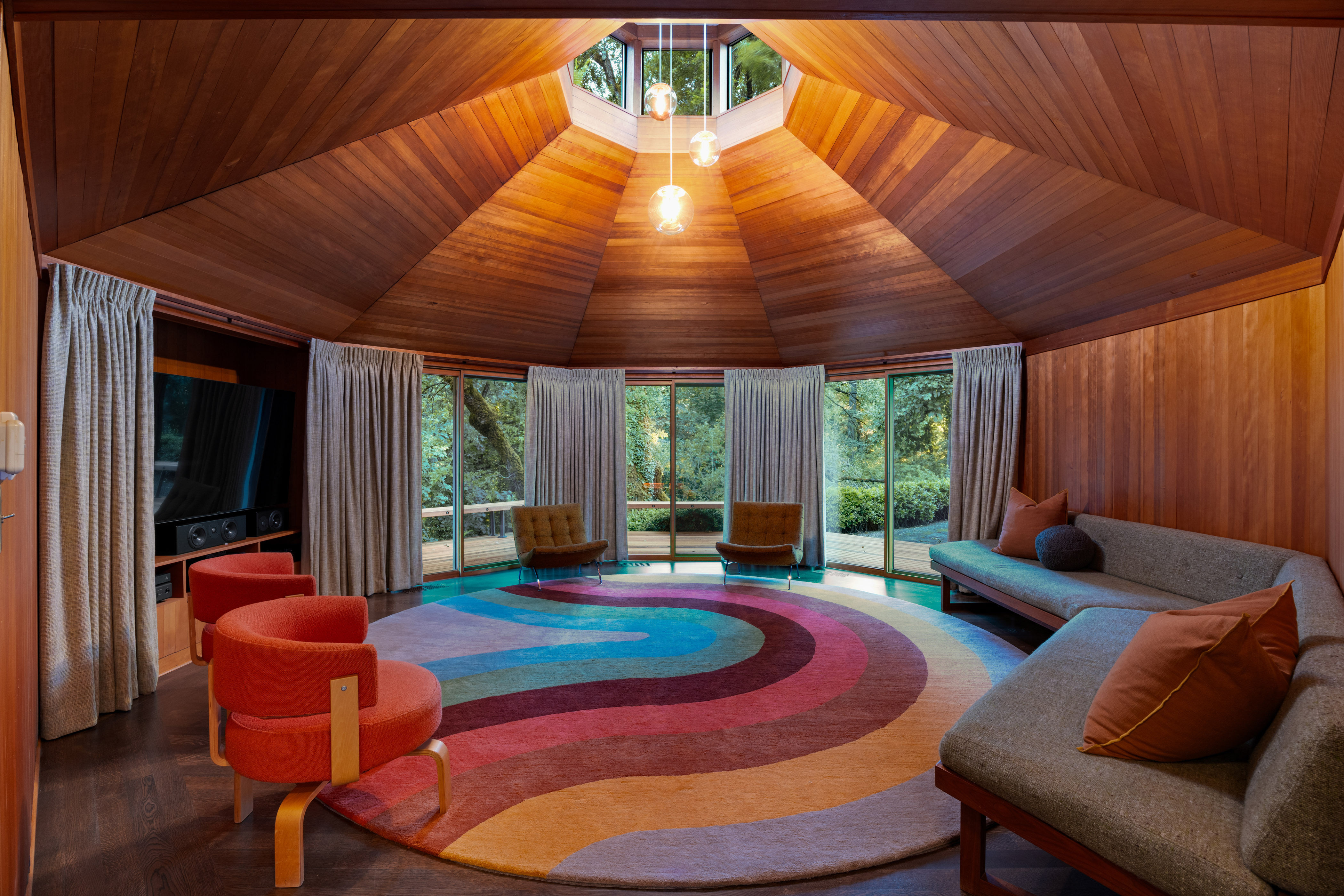What Will Become of Rapidly Changing Slabtown?
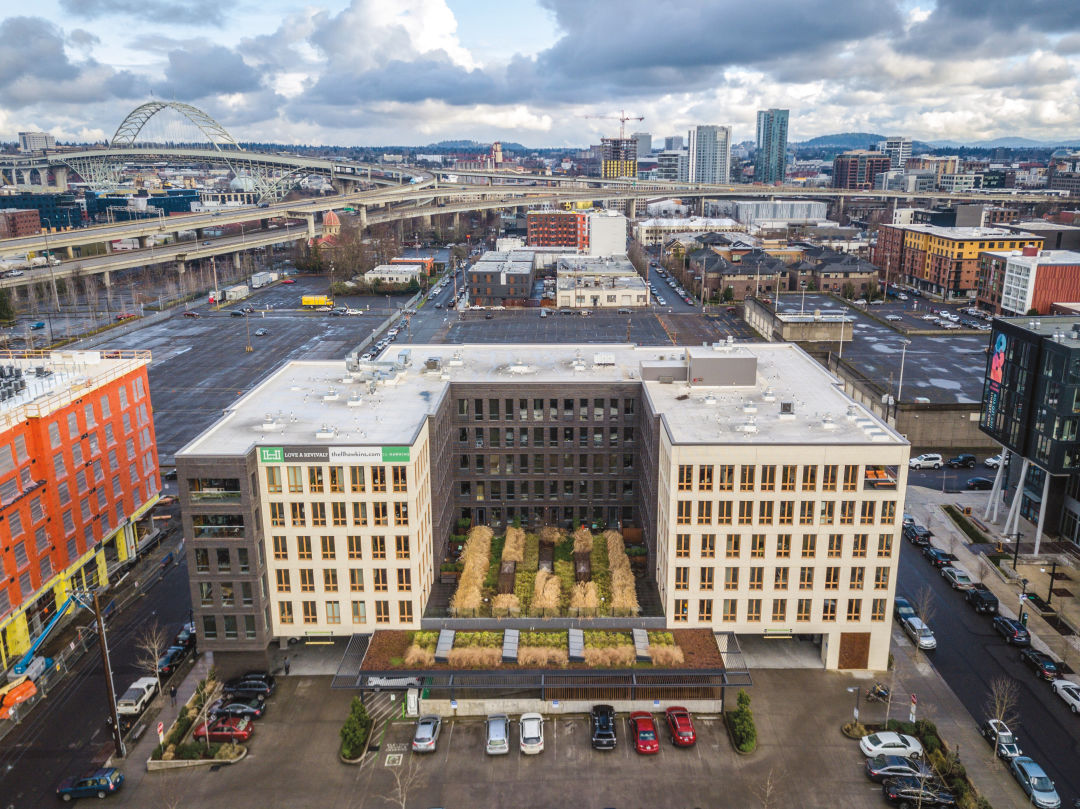
The LL Hawkins typifies the small but vital slice of Slabtown rising from a trucking company’s old parking lots.
Image: Courtesy Capstone Partners
At times, change here can feel intense enough to drive a soul to drink. May we recommend the Solo Club’s Nostalgia in Times Square? The cocktail’s very name sounds an urban theme, while its Prohibition Scotch and various powerful European elixirs should take the edge off.
Outside? Definitely a construction zone. But after one round, perhaps you’ll relax. We could do worse than the mini-neighborhood now evolving in Northwest’s Slabtown.
Pocket plazas and a pedestrianized passage (linking Raleigh and Thurman, between NW 20th and 21st) promise street-level humanity amid a rising skyline. New buildings like the six-story LL Hawkins and 14-story Carson North largely replace parking-lot tundra that served the Con-way trucking company. New residents and workers already throng New Seasons and Breakside Brewing’s airy pub. Places to hang (an imminent Good coffee outpost) and sweat (the cycling gym Industrial Ride) promise to fulfill the cliché urbanist dream of a walking-scale village.
If these half-dozen blocks off NW 23rd Avenue feel better than some of the other recent Portland upsizings—east-side streets, like Williams and Division, that can sometimes seem swamped and bullied by big new buildings—toast a confluence of factors. Location helped: Slabtown, a slice of Northwest once home to timber workers, now stitches together the Pearl District, Nob Hill, and a vast industrial area. In our boom time, just about anything here could have succeeded on some level. But specific players mattered. Con-way itself crafted a thoughtful, neighborhood-oriented master plan in 2011. “They’ve been in Northwest for 100 years,” Tom DiChiara, the architect key to the subsequent development, says of the company now known, after a $3 billion sale, as XPO. “They really wanted to do the right thing.”
DiChiara got started in the neighborhood with the Vancouver, Washington, developer CE John, creating sharp apartments like the Benevento and Sawyer’s Row. Some business-world metamorphoses led him to create a new firm, Cairn Pacific. In fulfilling that 2011 plan, Cairn has teamed up with Capstone, a Seattle and Portland real estate development firm.
The two companies, collaborators on several of the area’s new projects, blend Portland history with global influences. Buildings like the Leland James (a studs-up office renovation, completed in December) and Hawkins (113 mod apartments) bear the names of forgotten Portland notables. Streetscapes and façades emphasize quality materials and a diversity of scale; DiChiara’s company studied neighborhoods from Nob Hill itself to London’s West End.
Demand is strong. Plenty of Portlanders want walking-distance city life, and DiChiara notes that more local restaurants and retailers want multiple locations. “It just used to be easier to, say, go from Northwest over to Division,” he says. “Now you want everything in your neighborhood.” Corporate tenants can use neighborhood amenities as talent-recruiting tools. (The tech firm Jet Report is relocating 120 employees from Tigard to the Leland James.)
At least right here, the results so far feel like a place to be lived in, not just occupied to the max. (“We’ve tried to learn from missteps elsewhere,” Capstone’s Chris Nelson diplomatically says.) It’s already a pretty good place for happy hour, which is a fine start.
